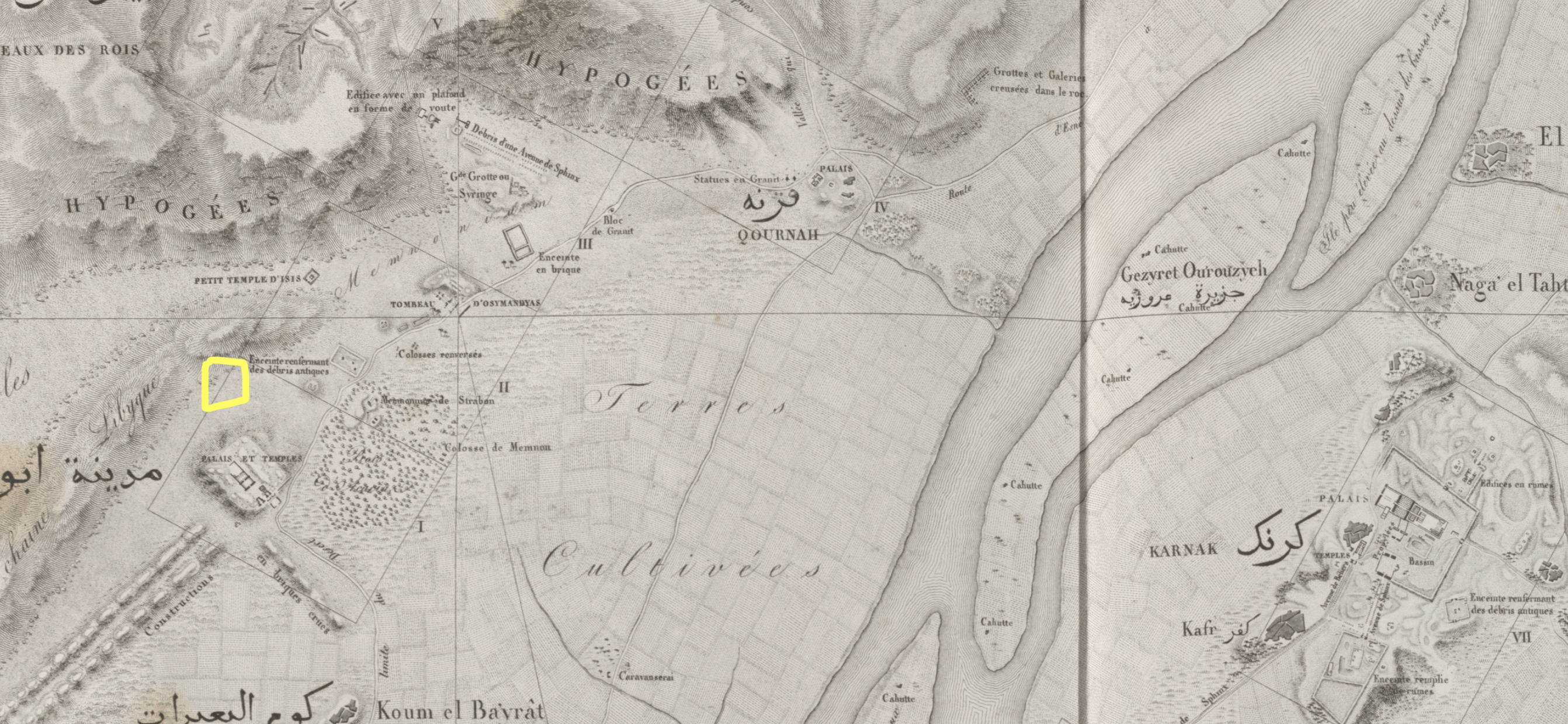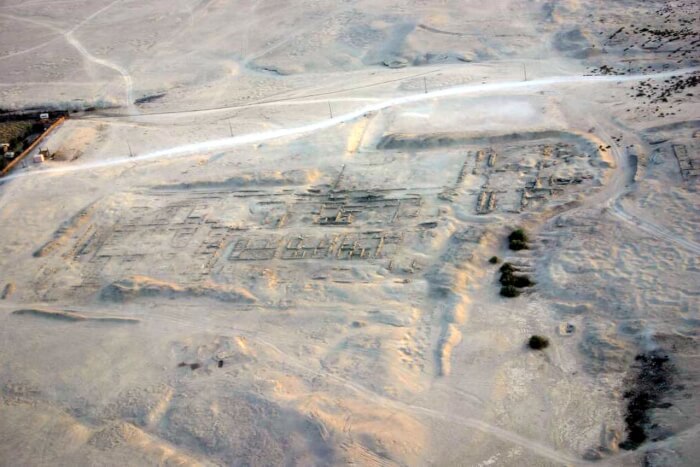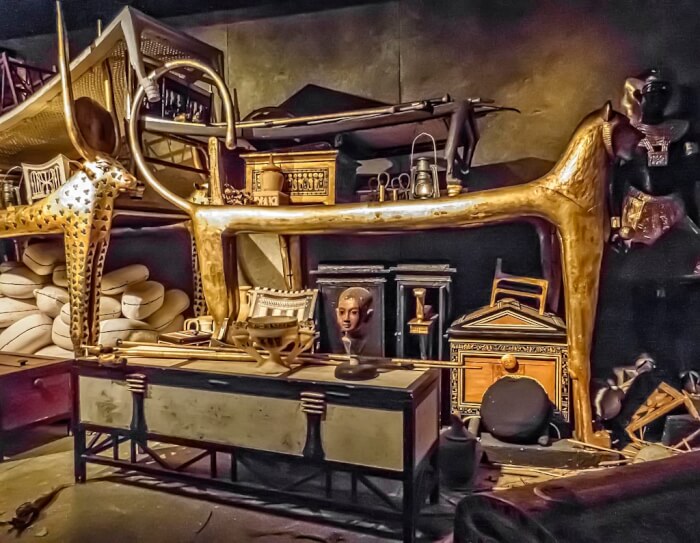Forgotten Egyptian “Golden City” Discovered Near Thebes
Recently, an extremely important find has been made in Egypt, where scientists discovered a long-forgotten “Golden City”, deemed to be the second in terms of significance after the Tomb of Tutankhamen, able to alter our knowledge of Egyptian history for good.
The discovery was near Thebes, dubbed “The Rise of Aten”, believed to be the biggest prehistoric municipality ever found in the nation. Previously, the city hid itself beneath the sands of Luxor’s western bank in southern Egypt.
According to the lead archaeologist, Zahi Hawass, it dates back to more than 3,000 years from around 1391 to 1353 BC, to the reign of King Amenhotep III, who ruled over a peaceful, prosperous and wealthy land. Free from war, the reign witnessed the establishment of several large temples and public buildings.
Scientists did not plan to find the Lost Golden City, as they initially came to the place in September 2020, looking forward to discovering a mortuary temple. They found a whole city, instead.
The municipality was perfectly organized, with an administrative area including several big constructions with 10 ft. (3 m) brick walls, detached from that of the residential district.
A workshop area, in which amulets, mud bricks, and other goods were made, was unearthed, together with other mercantile structures, namely a bakery.
However, the main concentration of the workshops was the erection of large temples, possibly consisting of those in the large funeral area found around the city outskirts. Much of this latter location, involving the skeletal remains beneath the cemetery, is still waiting for excavation.
But it is with the areas used by the living inhabitants of this city that there is the most potential. This finding is able to grant us a glimpse into how ancient Egyptians thrived, during a peaceful and wealthy period.
Starting from 2020, the excavation hasn’t been completely finished. Up to now, scientists have only been able to explore the southern part of the newly-found city, and the full extent of the city remains yet to be clarified.
At first, scientists came up with the idea that the location possibly held a mortuary building, where the subjects of Tutankhamun would have put burial things and food offered to him after his death in 1325 BC. Instead, the zigzagging mudbrick walls and relics of a living city were found.
Everyday items, including artistic and industrial ones, are scattered through the city structures. Around the city, there are proof indicating that the buildings housed workers. Scientists then deduced that this might have been a capital city.
Archaeologists were able to unearth proof of glass and metal production, together with a graveyard full of stone crypts. Beside human remains, strange bull and cow skeletons were also discovered within the city walls, baffling scientists to identify why they were put there.
However, the most astonishing accomplishment is the finding of 22 regal mummies, including at least 19 pharaohs, or kings. Two of them were from Amenhotep III and Tiye, his wife, currently exhibited in the New National Museum of Egyptian Civilization.
The name of Akhenaten, the son of Amenhotep III, appeared on some of the buildings. Akhenaten was a controversial pharaoh who forsook traditional Egyptian pantheon to worship a single sun god, Aten, and relinquished several Egyptian religious sites, including this newly-discovered one.
It has been pointed out that the loss of ancient Egypt is the gain for modern archaeology, because the decision to forsake the site has resulted in its preservation over thousands of years.
While Akhenaten’s new religion did not last long after his death, his son Tutankhamun possibly preferred not to return to The Rise Of Aten; rather, he constructed a new capital at Memphis.
Tutankhamun, and his Vizier Ay who succeeded him, might have continued to make some use of the city, but it was never the concentration of Royal patronage as it was prior to Akhenaten’s unexpected religious reforms.
The site was occupied as late as the 7th century AD, before being forsaken, hidden beneath the sands, according to analysis of the four settlement layers.
Not since the discovery of the nearby Tutankhamen’s tomb in 1922 has such a significant discovery been made. Hawass named this city “The Golden City” because it was built during the golden age of Egypt, and in the hopes of the archaeological treasures which might be found there.
Amenhotep III may well have been the wealthiest Pharaoh of all time, and this city was built during this peaceful period in Egyptian history. Many answers, including how these people lived, and why the grandson of Amenhotep chose not to return, may await discovery.
VIDEO:
The discovery was near Thebes, dubbed “The Rise of Aten”, believed to be the biggest prehistoric municipality ever found in the nation. Previously, the city hid itself beneath the sands of Luxor’s western bank in southern Egypt.
According to the lead archaeologist, Zahi Hawass, it dates back to more than 3,000 years from around 1391 to 1353 BC, to the reign of King Amenhotep III, who ruled over a peaceful, prosperous and wealthy land. Free from war, the reign witnessed the establishment of several large temples and public buildings.
An Unexpected Find
 Source: Wikimedia Uploads
Source: Wikimedia Uploads
The location of the city on an early map of the area. The site is across the Nile from the great palace complex of Karnak
Scientists did not plan to find the Lost Golden City, as they initially came to the place in September 2020, looking forward to discovering a mortuary temple. They found a whole city, instead.
The municipality was perfectly organized, with an administrative area including several big constructions with 10 ft. (3 m) brick walls, detached from that of the residential district.
A workshop area, in which amulets, mud bricks, and other goods were made, was unearthed, together with other mercantile structures, namely a bakery.
However, the main concentration of the workshops was the erection of large temples, possibly consisting of those in the large funeral area found around the city outskirts. Much of this latter location, involving the skeletal remains beneath the cemetery, is still waiting for excavation.
But it is with the areas used by the living inhabitants of this city that there is the most potential. This finding is able to grant us a glimpse into how ancient Egyptians thrived, during a peaceful and wealthy period.
Starting from 2020, the excavation hasn’t been completely finished. Up to now, scientists have only been able to explore the southern part of the newly-found city, and the full extent of the city remains yet to be clarified.
Treasures Underneath the Sands
 Source: Wikimedia Uploads
Source: Wikimedia Uploads
The ruins form part of Akhenaten’s Malkata palace complex
At first, scientists came up with the idea that the location possibly held a mortuary building, where the subjects of Tutankhamun would have put burial things and food offered to him after his death in 1325 BC. Instead, the zigzagging mudbrick walls and relics of a living city were found.
Everyday items, including artistic and industrial ones, are scattered through the city structures. Around the city, there are proof indicating that the buildings housed workers. Scientists then deduced that this might have been a capital city.
Archaeologists were able to unearth proof of glass and metal production, together with a graveyard full of stone crypts. Beside human remains, strange bull and cow skeletons were also discovered within the city walls, baffling scientists to identify why they were put there.
However, the most astonishing accomplishment is the finding of 22 regal mummies, including at least 19 pharaohs, or kings. Two of them were from Amenhotep III and Tiye, his wife, currently exhibited in the New National Museum of Egyptian Civilization.
The name of Akhenaten, the son of Amenhotep III, appeared on some of the buildings. Akhenaten was a controversial pharaoh who forsook traditional Egyptian pantheon to worship a single sun god, Aten, and relinquished several Egyptian religious sites, including this newly-discovered one.
Abandoned and Forgotten
 Source: Mary Harrsch
Source: Mary Harrsch
The greatest find since Tutankhamun’s tomb?
It has been pointed out that the loss of ancient Egypt is the gain for modern archaeology, because the decision to forsake the site has resulted in its preservation over thousands of years.
While Akhenaten’s new religion did not last long after his death, his son Tutankhamun possibly preferred not to return to The Rise Of Aten; rather, he constructed a new capital at Memphis.
Tutankhamun, and his Vizier Ay who succeeded him, might have continued to make some use of the city, but it was never the concentration of Royal patronage as it was prior to Akhenaten’s unexpected religious reforms.
The site was occupied as late as the 7th century AD, before being forsaken, hidden beneath the sands, according to analysis of the four settlement layers.
Not since the discovery of the nearby Tutankhamen’s tomb in 1922 has such a significant discovery been made. Hawass named this city “The Golden City” because it was built during the golden age of Egypt, and in the hopes of the archaeological treasures which might be found there.
Amenhotep III may well have been the wealthiest Pharaoh of all time, and this city was built during this peaceful period in Egyptian history. Many answers, including how these people lived, and why the grandson of Amenhotep chose not to return, may await discovery.
VIDEO:
Share this article
Advertisement